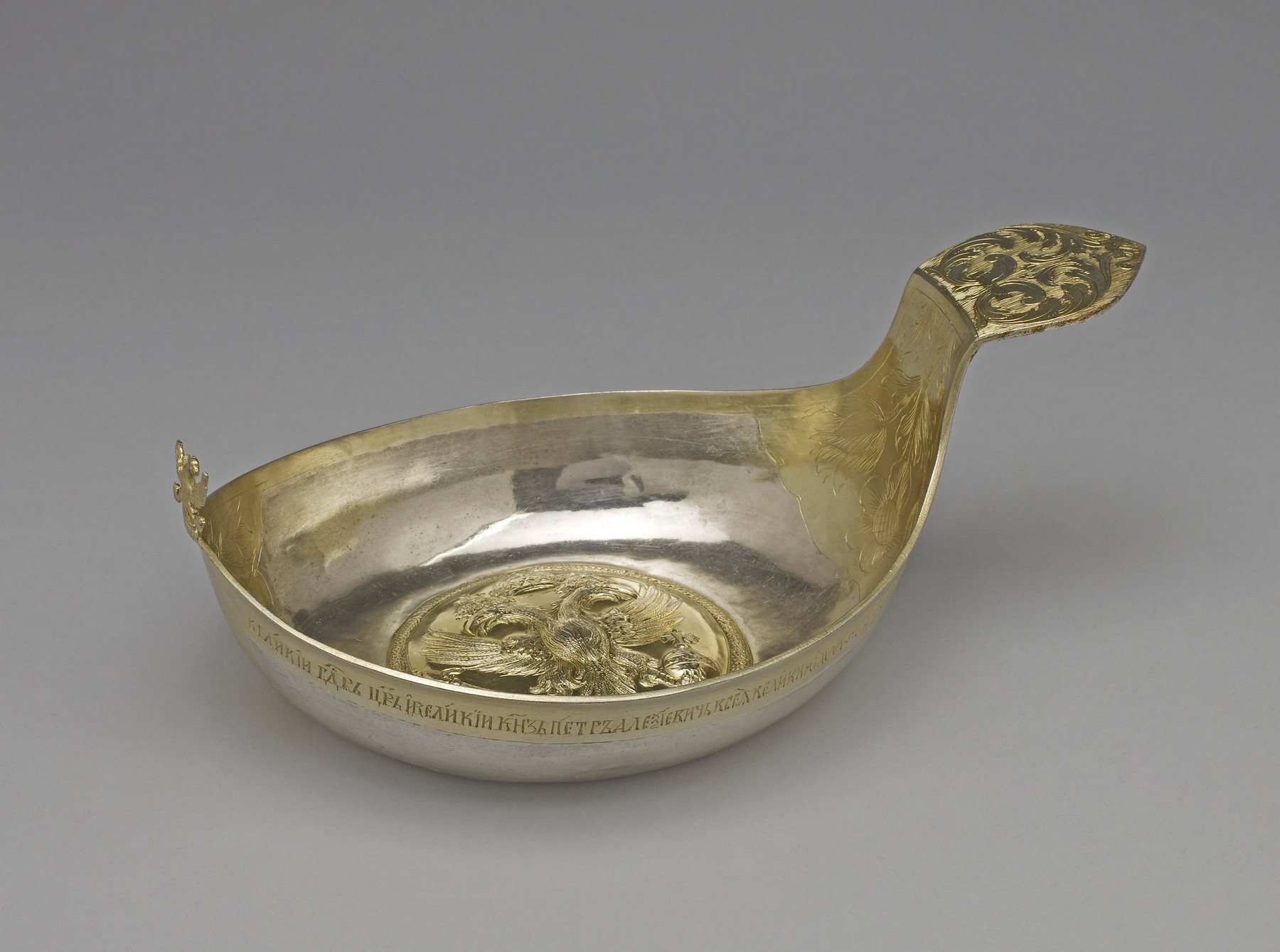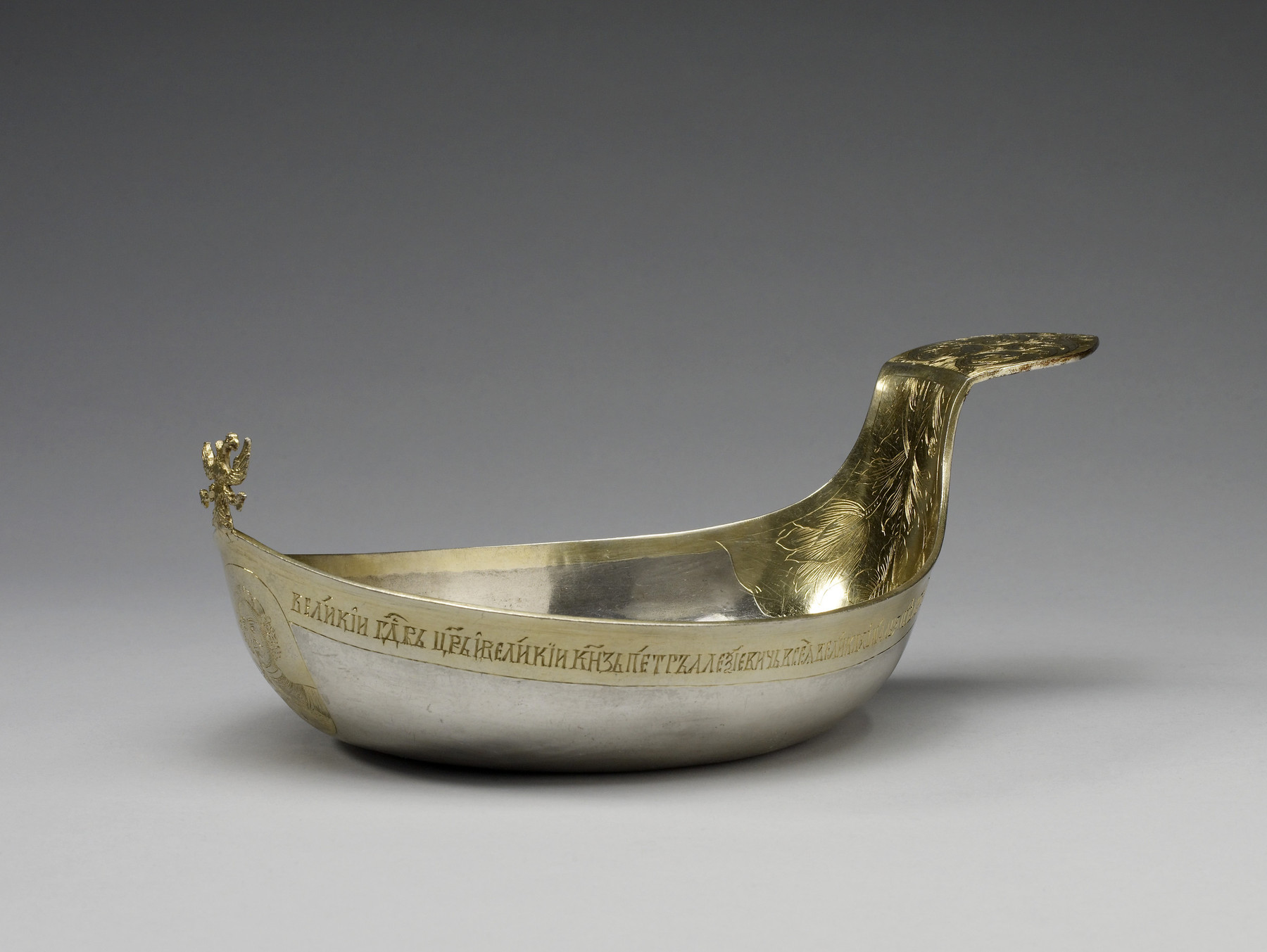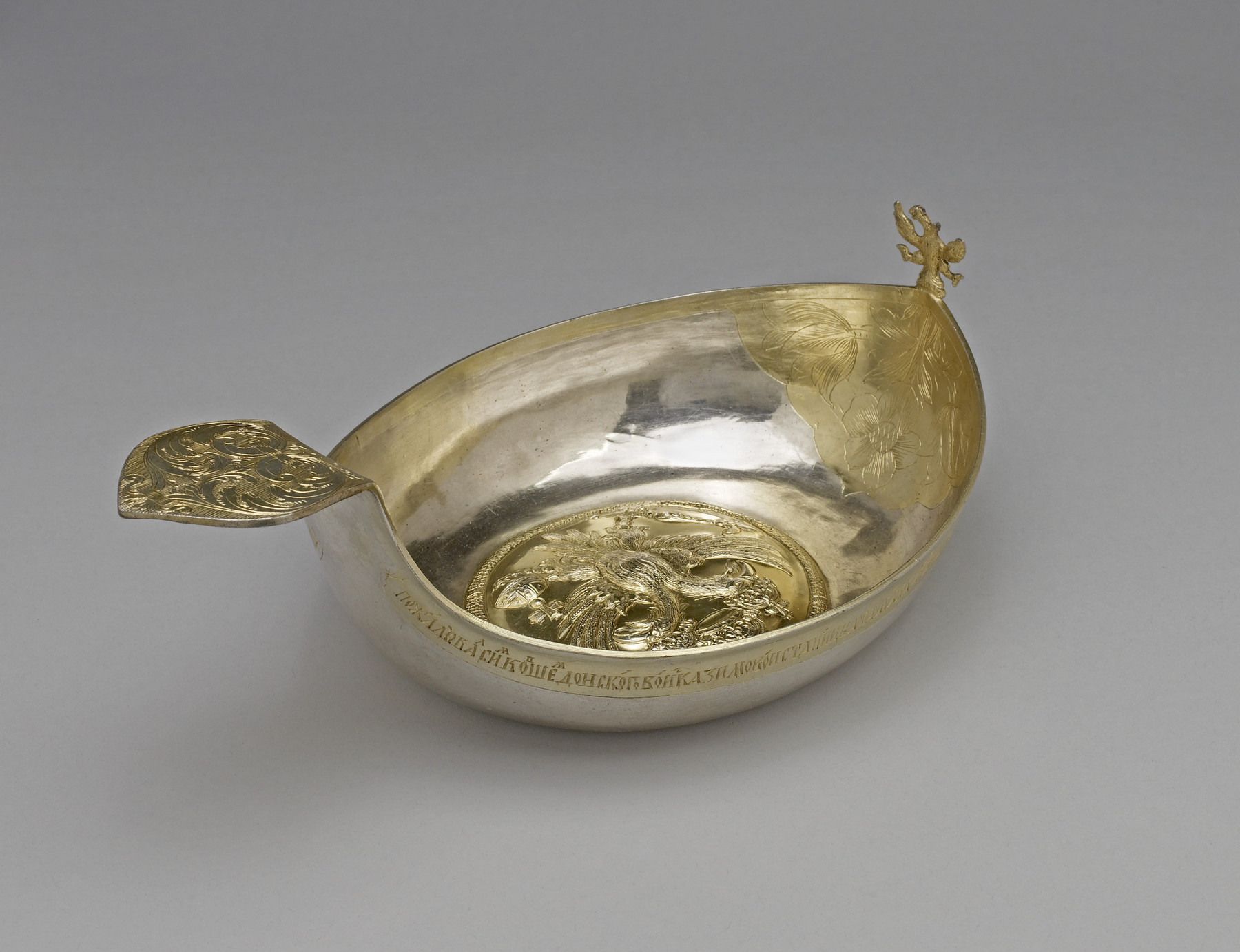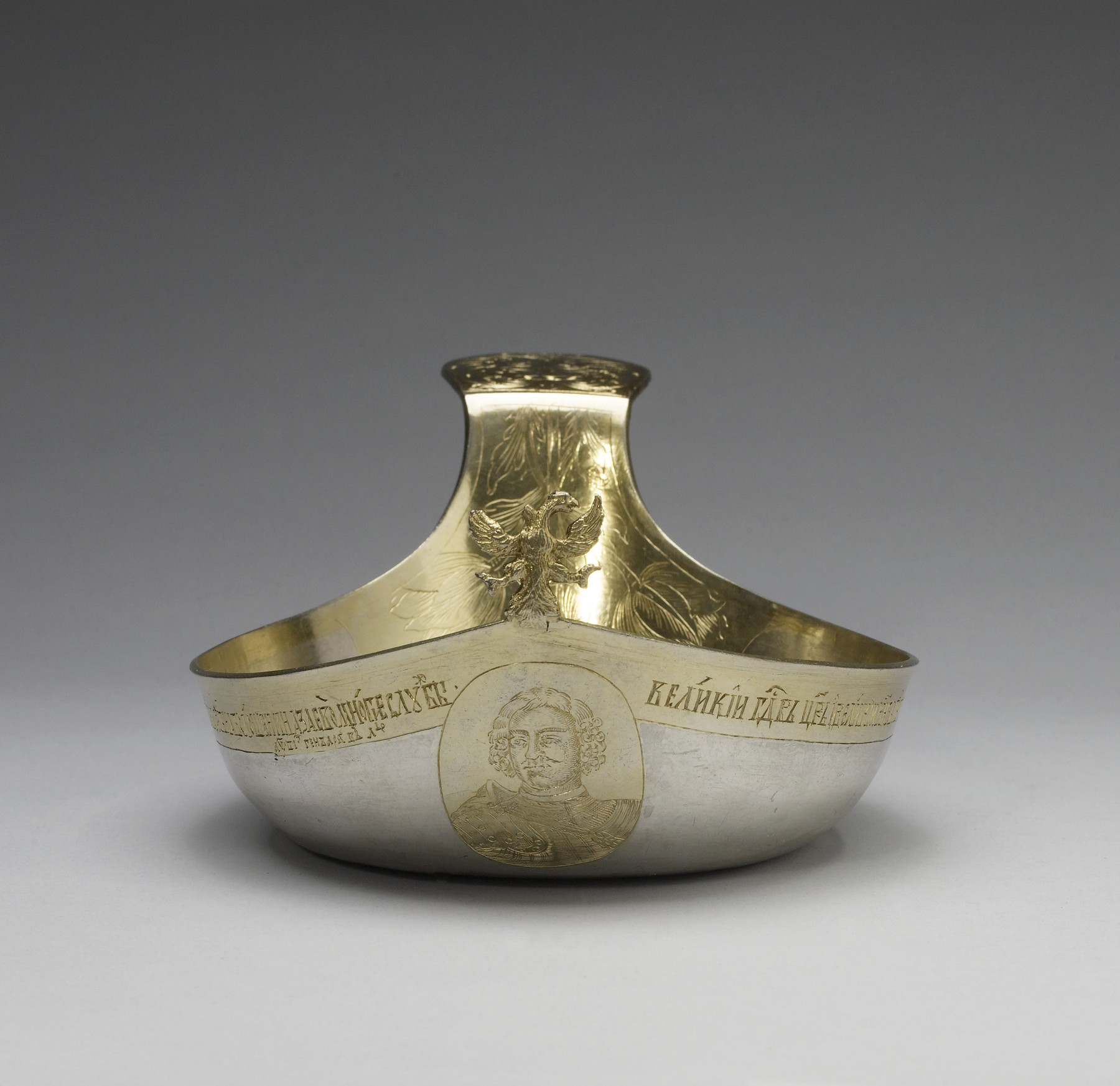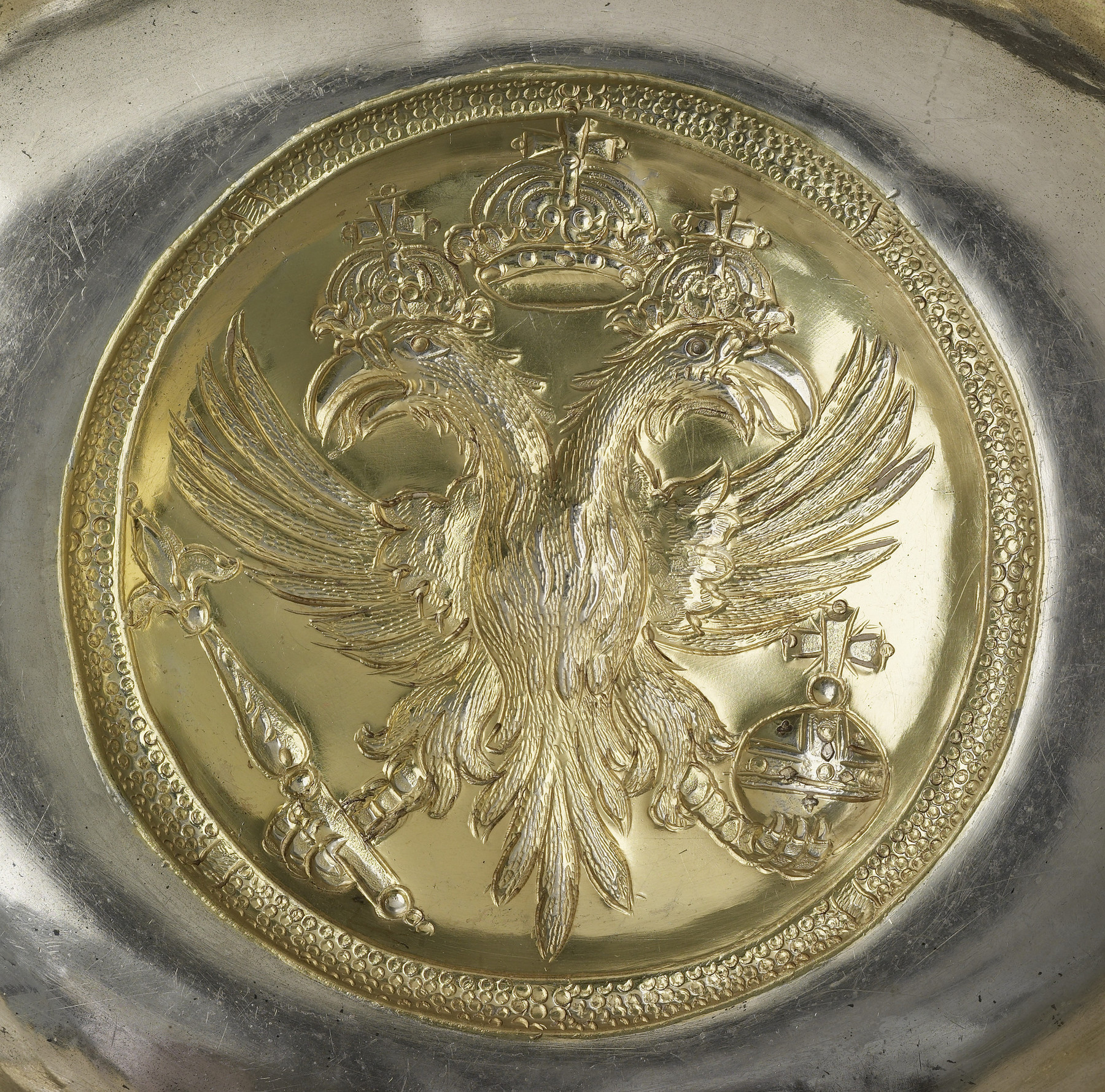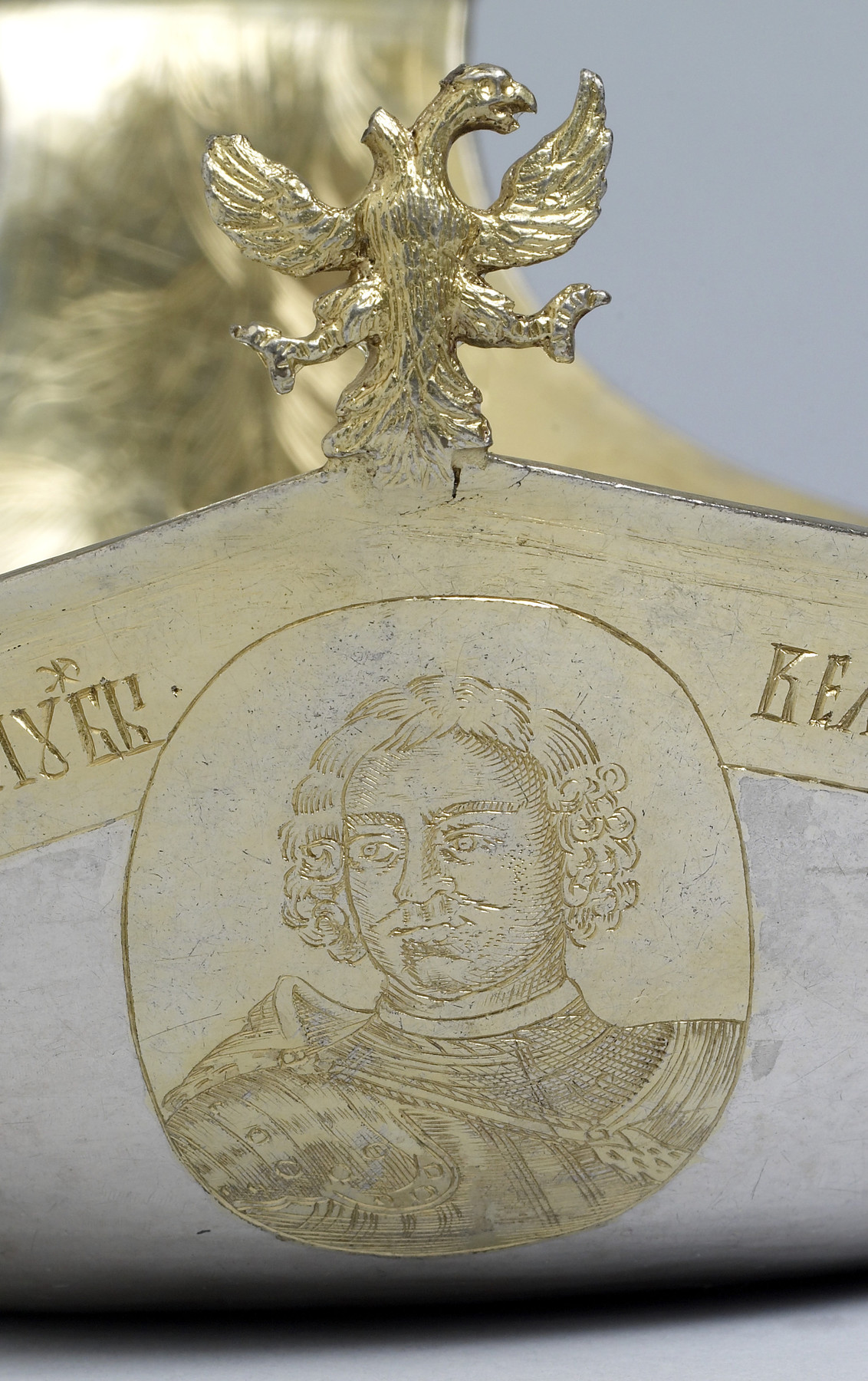Drinking Bowl (Kovsh)
(18th and 19th Centuries )
This kovsh, or drinking bowl, is engraved with the bust of Peter the Great in armor, and the base includes a repoussé double-headed eagle, symbol of the Russian Empire. The kovsh was presented to a commander of Cossack soldiers who was instrumental in uniting nomadic tribes at the outer reaches of the empire. Gilding highlights the important features of the drinking bowl: the inscription and heraldic devices.
Inscription
Provenance
Provenance (from the French provenir, 'to come from/forth') is the chronology of the ownership, custody, or location of a historical object. Learn more about provenance at the Walters.
Alexandre Polovtsoff (Aleksandr Aleksandrovich Polovtsov), Saint Petersburg and Paris, by purchase; Henry Walters, Baltimore, 1929, by purchase; Walters Art Museum, 1931, by bequest.
Exhibitions
| 2017-2018 | Fabergé and the Russian Crafts Tradition: An Empire's Legacy . The Walters Art Museum, Baltimore. |
| 1988-1989 | A Millennium of Christianity: Russian Art from The Walters Art Gallery. The Walters Art Gallery, Baltimore. |
| 1959-1960 | Russian Art: Icons and Decorative Arts from the Origin to the Twentieth Century. The Walters Art Gallery, Baltimore. |
Conservation
| Date | Description | Narrative |
|---|---|---|
| 8/24/2015 | Treatment | Cleaned |
| 8/24/2015 | Treatment | Cleaned to remove old acrylic coating and reduce silver tarnish in preparation for exhibition. |
| 8/24/2015 | Examination | Examined in preparation for exhibition. |
| 8/24/2015 | Examination | Examined |
Geographies
Russia, Moscow (Place of Origin)
Measurements
H: 3 7/8 × W: 10 11/16 × D: 6 5/16 in. (9.8 × 27.1 × 16 cm)
Credit Line
Acquired by Henry Walters, 1929
Location in Museum
Not on view
Accession Number
In libraries, galleries, museums, and archives, an accession number is a unique identifier assigned to each object in the collection.
In libraries, galleries, museums, and archives, an accession number is a unique identifier assigned to each object in the collection.
57.796

